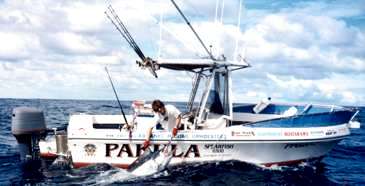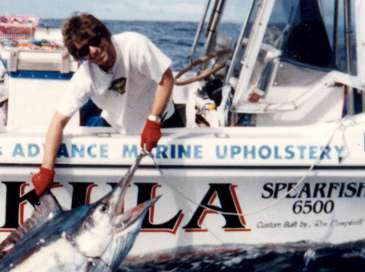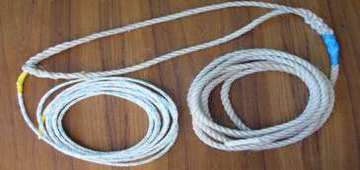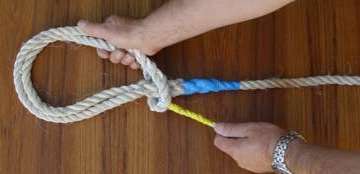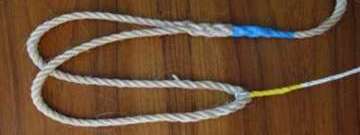06: Bill Rope
Between The Lines - Ch 08: Training
|
The number of game and sports fishing anglers who release the fish they have caught is continually increasing. Many anglers who enjoy the sport have caught many gamefish without ever intentionally killing any. This is certainly commendable as obviously, a live fish has far more chance of reproducing than a dead one. To try and increase the chances of the fish's survival after release, several techniques can be applied to ensure firstly, the safety of the fishing team and secondly, the safety of the fish. Many of the techniques involve getting the hooks out of the fish, which is far better for the wellbeing of the fish regardless of the rig or type of hook used. Handling most species of fish, especially marlin of any size, can easily get out of control. These predators are built for power and speed. They only need one power stroke of their disproportionately large tails to cover considerable distance both through the water and through the surface into the air. Every fish is different, some are worn out and quite docile as they come to the boat, others are still prepared to give a fight. All of them are potentially dangerous and capable of inflicting severe injury to themselves and the crew. Although we will be covering this in detail elsewhere it is worth running over a few points here. - When handling large or even small potentially dangerous gamefish, the boat should be in gear and be moving forward. - If possible, the fish should be handled on the side of the boat, not at the back. - The fish should be lined up parallel with the side of the boat and never pulled so that it is pointing at the boat or any of the crew. - The tools that may be needed should be ready and easily accessed if needed. - Everything that involves handling a fish at the side of the boat should be done as smoothly and quickly as possible for the wellbeing of both fish and crew. - Much of the activity can involve close contact with the fish at the side of the boat, while others in the crew, including the skipper, may not get a clear view of what is going on. This is another case where communication is important. Yell when each operation is started and completed. Ensure that there is an acknowledgement that it has been heard. - Those that are not involved in the action should stay clear and out of the way. There are many systems and equipment employed to handle fish that are to be released. The following are specific tools and methods that you can adapt to suit your team and boat configuration. The Animal Bill Rope System is the one we often employ to handle fish that may cause potential problems, which is a great percentage of them. It is hard to gauge whether it is an easy system to use or not, as the crew is quite experienced and can adapt to the fish's moods, most of the time. I found this a good system when fishing solo.
The system involves a length of rough silver rope with a loop at one end with a lighter rope spliced into the end of the loop. The loop is doubled back on itself as shown and passed over the bill. Pulling on the main rope tightens it on the bill. The rope is soft and fibrous which will hold firm on the marlin bill which is very rough. To release simply pull on the lighter rope which will open the loop.
To get to know the system try it out either on a real marlin bill as shown. Unfortunately, some marlin do die in a fight. As mentioned before one of the main reasons for doing this project is to lessen that occurrence. If you can't use a real bill for training use a round piece of wood with 80 grit sandpaper stuck to it. (Vid 1)
- The leader man has the fish under control. - Throughout this, the boat is idling forwards. - The fish is led up alongside the boat. - The loop is passed over the bill at least halfway down its length. Only roping the tip of the bill may result in it breaking off which can be very dangerous. Note that the other end of the rope is tied off to the boat with only enough length available to reach the fish. The shorter the rope you can use the better. - The rope is tightened on the bill. - The rope is then secured to a cleat, tied off as tight as possible immobilising the fish by restraining it against the side of the boat. - The hooks are then removed as quickly as possible using tools such as the hook out gun or pole as described previously. - The rope is then slackened off to swim the fish. The fish should not have its head out of the water for long at all. This whole exercise should be accomplished in under 15 seconds. - When you think the fish is revived and ready for release pull on the light rope and give the fish it's well-deserved freedom. (Vid 2)
This system may result in the side of the boat being scratched by bills and hooks which some may be concerned about while others look upon them as battle scars to show proof of released fish and successful days that bring back great memories, a little like having a lure that was highly polished when you got it but is now a battle scarred veteran. You may even wish to date the battle scars and get the angler to sign them with a comment.When you start out hunting and finally catch some of the larger fish in respect to the line class you are using or light drags, the fight may take quite a while resulting in the fish being in poor condition when you get it to the side of the boat. There are also many other reasons that may lead to a fish that you wish to release being in poor condition. In these cases, it may be necessary to swim the fish alongside the boat, sometimes for quite some time. To make swimming the fish easier, drop the fish back so it's head and gills are getting water through them and move the boat forwards at idle. Once the fish seems to be swimming on its own or playing up, pull the release cord to let the fish swim free.
|





